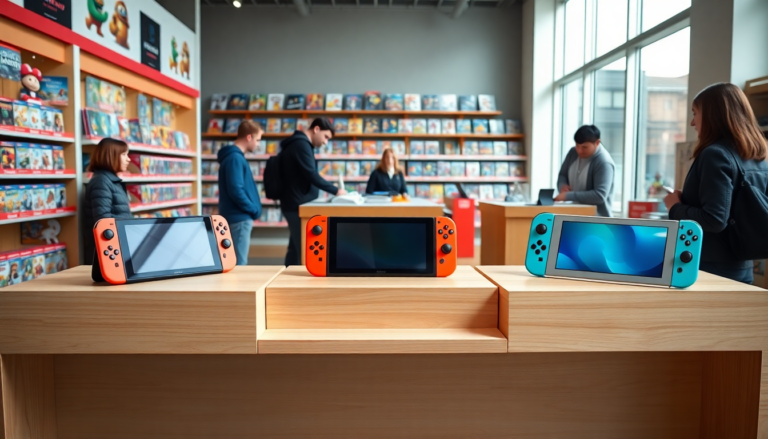Argomenti trattati
In a recent announcement, Nintendo has revealed an upcoming price adjustment for its original lineup of Nintendo Switch consoles in Canada. This change will affect the original Nintendo Switch, the OLED Model, and the Nintendo Switch Lite, and it’s all part of a broader strategy to adapt to shifting market conditions. But what does this mean for you, the consumer? Let’s dive into the reasons behind this price revision, its potential impact, and the current state of the gaming market.
Market Overview: What’s Happening with Prices?
The gaming industry in Canada is experiencing some notable fluctuations in pricing, driven by various market dynamics. Right now, the standard Nintendo Switch is priced at CAD $399, the OLED model at CAD $449, and the Switch Lite at CAD $259. These figures reflect a competitive landscape that’s been influenced by factors like inflation and trade tariffs. Have you noticed how prices seem to change overnight? You’re not alone.
Nintendo’s decision to adjust prices comes at a time when production costs are rising and consumer habits are evolving. While the exact details of these price changes haven’t been fully disclosed just yet, there’s buzz suggesting an increase could be on the way. Economic indicators hint that we might see a hike of about 5 to 10% as Nintendo aligns its pricing with the current market environment. Are you ready to make your move before the prices go up?
Understanding the Market Conditions
This isn’t the first time Nintendo has pointed to market conditions as a key player in its business decisions. Back in April, the company faced delays in pre-orders for the highly anticipated Switch 2, attributing these setbacks to uncertainties in trade policies and tariffs. This example underscores just how external economic factors can shape corporate strategies in the gaming industry. Isn’t it fascinating how interconnected everything is?
Interestingly, this price revision is part of a larger strategy that shows Nintendo’s awareness of the current market dynamics. While the older models may see price adjustments, the newly released Nintendo Switch 2 is exempt from these changes. This console, boasting a larger display and enhanced features, has already made waves, selling 3.5 million units in just four days after its launch. For those looking to snag cutting-edge technology without the looming price hikes, this might be a silver lining!
What Does This Mean for Consumers and Investors?
For anyone considering a purchase, understanding these price changes is crucial. If you’re thinking about getting one of the original Switch models or accessories, you may want to act swiftly. Being aware of the market trends can give you a strategic edge, empowering you to make well-informed decisions. Are you ready to seize the opportunity?
Investors in the gaming sector should also pay close attention to these developments. The pricing adjustments not only reflect Nintendo’s response to market pressures but also hint at broader trends within the gaming industry. Grasping how these economic factors influence consumer behavior can offer valuable insights for anyone looking to invest in gaming technology and related products. Isn’t it exciting to think about the potential opportunities?
In conclusion, as Nintendo navigates the complexities of the current market, staying informed is essential for both consumers and investors. Keeping an eye on the evolving pricing landscape for the Nintendo Switch can significantly enhance your decision-making process, whether you’re buying or investing. While the future of pricing remains a bit murky, being proactive and knowledgeable will certainly be your best asset in the gaming market.

